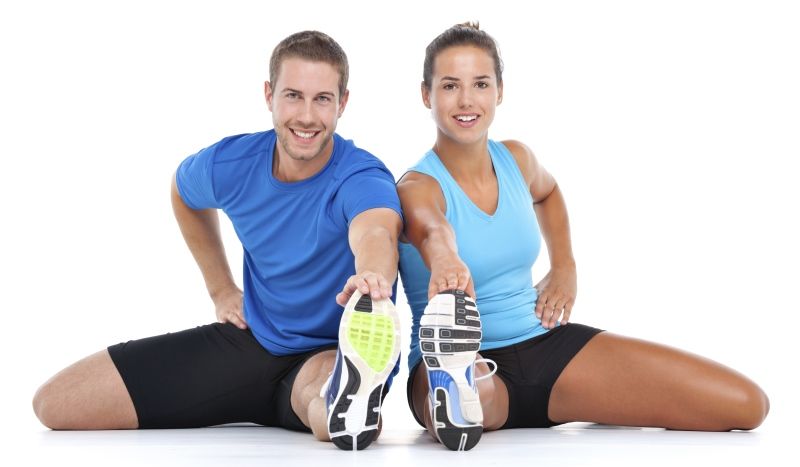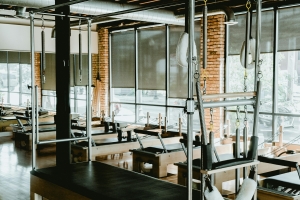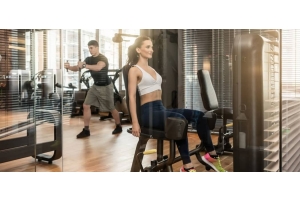Why You Need to Stretch

The art of stretching, we all know that we should stretch before and after a workout but many people do it as a cursory thing and some may not do it at all. So why is stretching important and how should it be done properly?
Why Is Stretching Important?
Muscle Development
If you want to build muscle then stretching will help you develop a full range of movement. It will help you build full and long muscles.
Assists Posture
Stretching assists posture by lengthening tight muscles that pull areas of the body away from their intended position. A good example of this is if you do a lot of work at a desk with a computer, you can end up with a hunched shoulder look.
Prevents Injury
Stretching helps to prepare muscles for the work they are about to do and will elongate the muscle. This will help prevent muscles pulling or tearing during exercise and prevents strain being put upon ligaments or capsular structures.
Prevents Muscle Soreness
Stretching warms muscles up and increases blood and nutrient supplies to muscles. This is also a way of preventing the muscles hurting after a workout.
Increases Range Of Motion
Stretching will develop flexibility in general thus aiding mobility and movement. Being flexible is proven to reduce the chances of chronic back pain. Flexibility will allow us to accomplish ordinary daily tasks from bending over to tie our shoe laces and also to perform more demanding tasks as flexibility ensures that joints can be taken through a full range of motion with little effort.
What Types of Stretching Are There?
There are many different stretching techniques including static stretching, dynamic stretching, PNF, myofascial and stretches often performed in yoga. Here we look at static and dynamic stretching.
Static Stretching
This is probably the stretching you may have done before and after a fitness class. You basically hold a muscle for so many seconds, usually around 30 seconds. Research suggest there is no added benefit of doing a stretch like this for longer than 30 seconds. These stretches are best done after a fitness workout as your muscles will be warm. A static stretch when your body is cold can cause injury.
Static stretching is effective as when you hold the position with the muscle under tension a stretch reflex causes muscle relaxation. When this occurs the muscle can be stretched further. This is a relatively safe method of stretching and should be pain free.
Static stretching can either be active or passive. Active stretches involve you moving the joint through its range of motion and holding the stretch yourself. Passive stretching is also known as partner stretching and as the name suggests involves using a partner to move the joint to the point of tension. This latter technique can have its problems, you must always communicate to your partner if you experience any pain or discomfort.
Benefits Of Static Stretching
Research has shown that static stretching will improve flexibility and the range of motion your joint can perform. It can also help with relaxation, can help muscle soreness and is also relatively safe. For this reason static stretching is the most commonly used stretching that you will be asked to do in gym fitness classes.
Dynamic Stretching
Dynamic stretching as the name suggests differs from static stretching as it involves movement and muscular effort. It is a combination of flexibility and strength. This is increasingly popular in warm up situations. This involves taking a muscle through the entire range of motion starting small but then building up movement range and speed. Examples include high knees and lunges. To do these you should first do a short cardio warm up and each stretch should be performed at slow medium and fast speeds. Dynamic stretching programmes use more sport specific techniques that relate to certain sports
Benefits Of Dynamic Stretching
Dynamic stretching is seen to increase power and endurance. It also helps with balance, increased speed of contraction and a more efficient neuromuscular activation. Above all one of the biggest benefits of dynamic stretching is that, if your stretching includes movement patterns involved in the sport you are about to do, then injury can be prevented. This is because the body , including the central nervous system, will be prepared for what you will ask it to do whether that is a game of football or hockey.
Ballistic and PNF Stretching
Two further types of stretching you may see are ballistic stretching and PNF. Ballistic stretching involves you bouncing into a range when the muscle is not prepared. However this can be dangerous so should be approached with care and is usually performed with a professional. PNF stands for Proprioceptive Neuromuscular Facilitation. This is a more advanced form of stretching that involves both the stretching and the contraction of the muscle group. It was first developed as a form of rehabilitation. PNF tends to be used by physiotherapists and other sports injury professionals. Care does need to be taken with PNF stretches as they can put added stress on the targeted muscle group.








